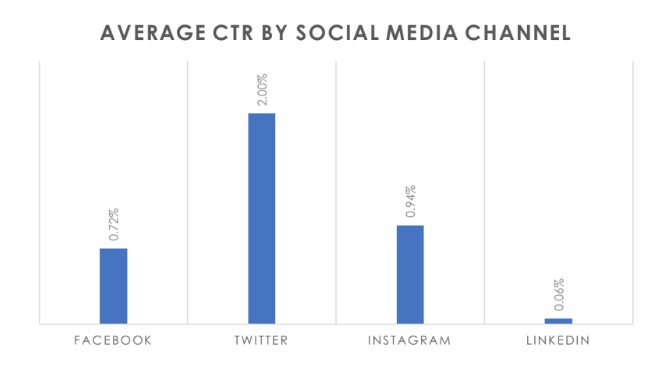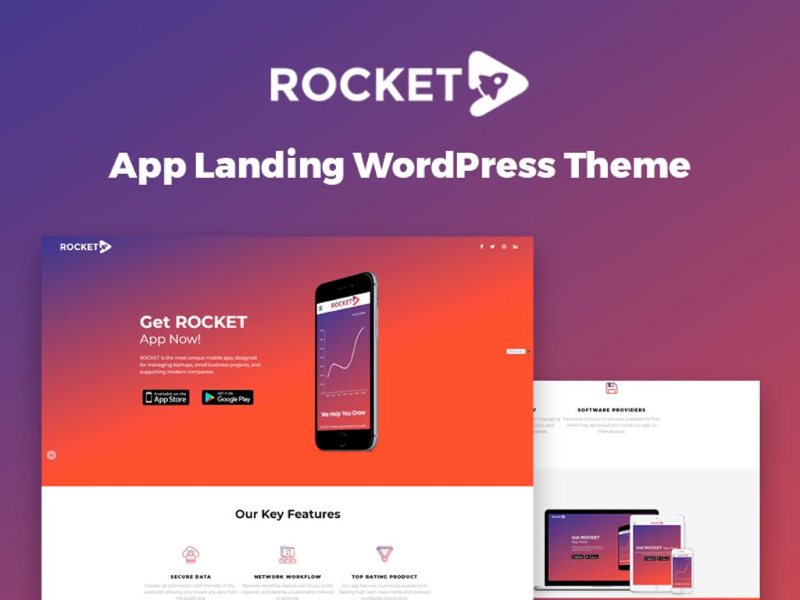
Digital marketing describes how to target specific audiences. This industry has existed since the 1990s when Tim Berners-Lee, a computer scientist, created the World Wide Web. Search engines were born. It has become the most widely used way to reach consumers in both local and international settings. However, you should understand the basics of this field before attempting it for your own business. Here are the main elements of a successful digital marketing strategy.
Inbound marketing
Inbound marketing is digital advertising which targets customers who are actively seeking products and services. Inbound marketing helps potential customers find your company through search engines, email subscribers, word-of–mouth, blogs and online reviews. Instead of spending money on advertising, create content that your ideal customers will enjoy reading and using. It is possible to start by creating a blog with advice from others, then move onwards.
You can host live events and engage customers by writing blog posts. You can host Q&A sessions and product tutorials during these events. Live events can be made possible by social media platforms such Instagram Live, Facebook Live, and Instagram Live. Customers will be satisfied if you provide great customer service. This will help build a positive image for your company and attract more customers.
Inbound marketing is one of the most powerful forms of digital marketing. It is more effective and trustworthy than traditional advertising methods and helps to build trust with customers. It shows genuine concern for customers, unlike other forms of advertising. Furthermore, it costs less, and the results can last longer. This is especially true in the digital age, where mass marketing is not only ineffective but also risky. Inbound marketing can increase your return on investments.
Inbound marketing is customer-oriented, meaning it starts by creating content for your target audience. Inbound marketing is different from traditional marketing, which focuses on spreading word about a company. Instead of focusing on the business itself, it aims to provide useful information for its readers. The inbound marketing strategy then presents a compelling offer of information that catches their attention and then follows it up with direct advertising. Inbound marketing helps you to establish relationships that lead to sales and profit.
Outbound marketing
Outbound marketing is a type of advertising that seeks to increase brand awareness and reach new customers. This kind of marketing focuses on proactive marketing, which means contacting your prospects instead of waiting for them to approach you. While it is difficult to measure the effectiveness of outbound marketing, it can still be an effective way to create brand awareness. Outbound market combines inbound marketing with outbound.
Outbound marketing refers to any form of marketing that is not generated by the company itself. This marketing pushes the company on its customers, regardless of whether or not they are interested. Telemarketing, print and broadcast ads, billboards pop-ups and contextual ads are all examples of outbound marketing. This type of marketing is no longer as effective as it used to be, as people have become so used to it.
Outbound marketing is about attracting potential customers through providing relevant information and quality content. Outbound marketing is different to inbound marketing which involves sending a message directly to a target audience. Outbound marketing can be expensive because it attracts more customers to your website. Outbound marketing works better because it generates more leads. Furthermore, it is easier to target the right prospect.
Outbound marketing can be both targeted and non-targeted. This is done by attracting leads through targeted keywords and converting them in to customers. The difference in marketing between the two is dependent on the target audience. By guiding buyers through the buying process, inbound marketing encourages visitors take action. Marketers can qualify leads by using inbound marketing because people are eager to interact with your content. However, outbound marketing still works.
Content creation

Digital marketing campaigns will succeed only if you have a solid content strategy. Your customers will be dissatisfied with a poorly-written website that contains irrelevant content. Poor quality content also impacts your business ratings and can damage your reputation. Your site will provide valuable information to visitors if you have a solid content strategy. These are some ways to make sure your content gets the results you want. Once you've finished the checklist, content creation can be an asset to your business.
Identify your audience. Social media is a powerful tool to help you with your content marketing strategy. It is easy to reach large user bases via social media networks such as Instagram and Twitter. Targeting these platforms will help you drive more traffic and improve your conversion rates. Your content should be compelling. You will find that consumers share your content via their social media accounts. Your audience is the focus of any content strategy, no matter if it's for a website or blog.
Make sure to research your competition. Your competitors' approach to content creation will help you differentiate your brand voice and fill in any gaps in your content strategy. This will also increase your content's chance of being seen by customers. You should, for example, include the YouTube videos of your competitors in your PPC campaigns. Video sharing on YouTube can increase the number and quality of leads that your video receives.
You should create content that snaps and crackles. Content that connects with readers can do so through story, emotional triggers or rewards. Content creation is influenced by word choice. The wrong words and phrases can destroy your content, while using words that have shown positive results will improve your metrics. It'll be easier to write attention-grabbing content if your skills are solid. All of these elements are necessary to create the best content.
Analytics
In the past, product managers made decisions based on their own intuition and past experience. Their data collection techniques were limited to analyzing past performance, which provides a partial view of customer preferences. Instead, product managers interviewed customers directly to compile their comments and feedback. These diverse data streams must be combined to produce comprehensive insights that will improve customer experience. An effective analytics platform should enable business owners to determine the best strategy.
The key to successful analytics is identifying the right metrics for your digital strategy. You can automate the process by using tools. Data collection is important to understand changes and how marketing strategies have affected sales. To make the most of your data, you should start small and then monitor your digital marketing campaign's progress over time. Be sure that your analytics are linked to your ROI. You don't want vanity metrics to distract you from your business goals.
The data collected through web analytics is valuable for digital marketing analytics. Nearly all channels can lead users to a site. Digital metrics on your website map visitor behavior and influence design and copywriting. Using this information, digital marketing analytics experts can better understand how visitors respond to the brand's message. Analytics can track page load times, which can impact conversion rates and overall conversion rates. With this data, you can make informed decisions on how to improve your digital marketing campaigns.
As a result, digital marketing analytics can help you optimize your marketing spending and identify the most effective ways to improve the results of your marketing campaigns. You can determine which traffic sources are most effective, and design marketing strategies that maximize these opportunities. Segmenting traffic by source can be a great way of determining which traffic sources are most profitable. Then, you can target the five top channels to attract your audience. This will allow to target your marketing efforts at specific target audiences, maximising your profits.
PPC ads

PPC ads can be described as digital marketing. It has many components. Retargeting and remarketing are two of the many components of digital marketing. Your ads must engage people and offer a compelling value proposition. Your ad headline should be compelling and include a call to action. You might consider testing different ad formats, depending on the method you choose to use PPC.
PPC advertisements work best if they convert. You can analyze your performance by tracking impressions, clicks, and conversion rates. Other important metrics such as attribution can be examined to gain insight into customer journey. The ultimate goal of every PPC campaign is conversions, so optimize all aspects of your ads. You should ask probing questions of your ad groups to see what works and what doesn't. An additional step is to examine your ads for broken hyperlinks and grammar errors.
PPC is a major business in digital marketing. Alphabet earns $162 billion each year from ad platforms. There are many ad formats, but Google Ads is by far the most popular. Most businesses start with Google Ads. This program has many benefits and is highly flexible. PPC ads are one of the best ways to advertise online. You can target users based on their search habits or products.
Another type of PPC ad is the shopping campaign. These ads appear in the SERP, and show products in detail. They offer potential customers essential information before clicking through to visit the store. To create shopping ads, you will need a product feed. This data feed can be uploaded to your Merchant Center. This account should be linked to your PPC campaign. Shopping ads are a great way to get high quality traffic. Be sure to try all ad formats before making a final decision.
FAQ
What is a blog post?
A blog is a type website that lets visitors share content. Blogs usually contain a mix of written posts and images.
Bloggers often write blogs about their personal experiences, opinions and interests. But some bloggers opt to write about topics relevant to their business or careers.
Blog owners can use a simple-to-use program called a blogging platform' to set up their blogs. There are hundreds of blogging platforms available. Tumblr and Blogger are three of the most popular.
Blog readers read blogs because they enjoy what they read. It's important to keep your writing fresh and interesting. Be sure to know what you are writing about.
You should also provide helpful information and resources to help readers understand the subject better. To illustrate, when you write about improving your site, don't just tell readers to go on Google and check out other business' websites. Instead, give clear instructions on the steps required to create a website that's successful.
It's important to remember that people will enjoy reading your blog if it has good content. It's unlikely that anyone will continue reading your blog if the writing isn’t clear and concise. Poor grammar or spelling is also unacceptable.
When you begin blogging, it's easy for things to get out of control. Make sure you stick to a schedule and only publish content once every few days. Your blog should never feel like a chore.
How often do I need to update my website
There are several ways to update your website. One way to make your website more modern is using a CMS, also known as a Content Management System. You can edit every aspect of your website from this CMS without ever touching code.
Another option is to use a plugin which automatically updates your site. You can buy these plugins through WordPress stores or install them yourself.
WPtouch plugins and Yoast plugins are available for free. It is best to experiment with different methods and then decide which method works best.
Is link building still relevant to SEO?
Although link building is essential, it's different today than it was 10 years ago. Finding customers and making sales is today's greatest challenge for any company. That's where search engine optimization comes into play.
Nowadays, businesses need to use social media, and content marketing strategies are also very important. Google penalizes websites that have too many links back to them. It makes link building less efficient than it used to be. This makes sense because if you're linking to many other sites, there's probably nothing original on yours worth looking at.
All these factors mean that link building isn't nearly as valuable for ranking your website as it once was.
What Does SEO Mean For Small Businesses?
Today's biggest challenge for small businesses is competing with larger corporations that spend millions on advertising. Search Engine Optimization (SEO) allows smaller businesses to take advantage of this same marketing power without having to break the bank.
Statistics
- Which led to a 70.43% boost in search engine traffic compared to the old version of the post: (backlinko.com)
- Deleting those 10k pages is one of the main reasons that he improved his site's organic traffic by nearly 90%: (backlinko.com)
- Sean isn't alone… Blogger James Pearson recently axed hundreds of blog posts from his site… and his organic traffic increased by 30%: (backlinko.com)
- 93%of online experiences today begin on search engines. (marketinginsidergroup.com)
- If two people in 10 clicks go to your site as a result, that is a 20% CTR. (semrush.com)
External Links
How To
How to choose an SEO strategy that works for your business
The following factors can help determine which SEO strategy is appropriate for your website.
-
Keyword Research
Your primary goal in SEO is to rank high for certain terms. To do this, you need to research keywords that are related to your website. Negative keywords should be avoided.
-
Content Strategy
Content marketing is important for all businesses. The challenge for eCommerce sites is to ensure that their products and/or services appear high in search engine results pages. This drives sales and increases conversions.
Creating relevant, engaging content that solves problems and provides solutions is key.
-
Link Building
Links help you rank high in search engines. So, you need to focus on creating valuable relationships with other websites.
-
Social Media Marketing
If your website is active on social media channels, it may be a good idea to make use of them to promote your brand. Share your material on these social media platforms to encourage others.
-
Website Structure
While good design may not always lead to higher rankings it can make a significant impact on your website's ranking. A simple, clean layout will improve the user experience which in turn leads to more conversions. It is important that your site loads quickly in order to make sure users don’t leave the site without completing their transactions.
-
Mobile Optimization
Mobile devices account for almost half of internet usage today.If your website isn't optimized for mobile, you could lose out on traffic and potential clients.
-
Local Search
This refers to targeting local markets rather than national ones.Local SEO works by optimizing your website for local searches such as "restaurants near me" or "businesses in my area." It is easier for local SEO to rank well because people trust recommendations from relatives, friends, colleagues and colleagues.
-
Ecommerce Website Development
Ecommerce websites benefit from a range of different types of SEO strategies.For example, they often perform best when they're optimized for both desktop and mobile devices. You can rank higher for longer tail keywords.
-
Video Ranking
Videos perform well on search engines. It ranks highly for longer queries and receives more share.
-
Branding
Branding is the process of designing a logo, product names, and messaging that gives your company its own identity and personality. This helps customers know who you are and what your company does.
-
Analytics Software
Analytics software allows you to track how visitors interact with your website.The information gathered through analytics can help optimize your efforts and increase conversions.
-
Email List Management
Email lists allow you to send emails directly to your target audience.You can send messages about new products, special offers, and promotions.
-
Blogging
Blogging is another way to generate quality backlinks. Blog posts that relate to your business will bring you links from reliable sources.
-
Customer Satisfaction
Customer satisfaction is one of the most effective ways to get high-quality backlinks.When satisfied customers refer their friends and colleagues to your site, this will result in quality backlinks.
-
Content Marketing
Content marketing involves producing unique, useful, relevant content that educates, entertains, or inspires readers.
Engaging content builds trust and leads to higher conversion rates.